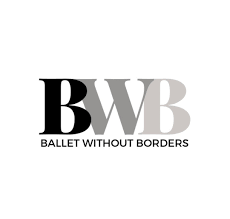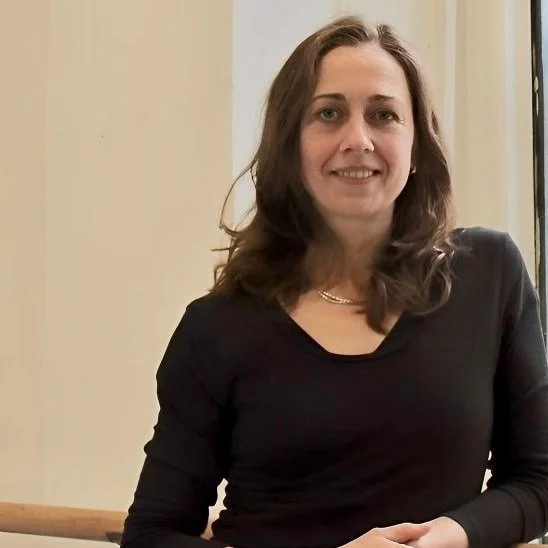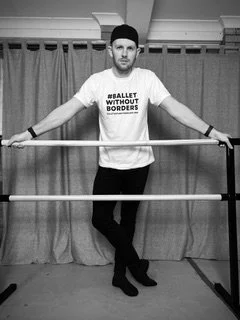On Sunday the 11th of December I had the opportunity and pleasure of presenting at the RAD Conference which was part of the Genee Competition 2016 held in Sydney, Australia this year.
Below is my speech. I received a wonderful response with plenty of support on the day! It was really moving to see so many people wanting to make a difference with me.
"Today I wanted to start a dialogue about the importance of creating new pathways and support models in order to enable children from low socio economic areas to participate in ballet education. What does this mean for the future of ballet? And why should we care?
Ballet is a gift. Underneath all the frustration, and many sacrifices there is something which keeps us coming back. Some kind of connection we have for this unique and demanding art form. I don’t know what this magic is for you but when I dance I feel free.
Imagine that you are in the studio, it’s a lovely day, you are wearing your favourite leotard, beautiful music is playing, you land a clean double and time stands still in that moment whilst you are turning, it’s like you are flying and when you pull it off, but does it not just feel amazing.
The joy that I get from ballet is pure freedom and happiness and in that moment of suspension it is happiness in its pure form, not reliant on money, power, or anything else actually that is going on in my life.
But really apart from that moment of freedom that magic has, unfortunately, everything to do with money and accessibility. Very few have the chance to experience what we experience as a participant or spectator.
Children from low socio economic backgrounds don’t get to have this gift. For me, a child who doesn’t have the opportunity to experience ballet is like a child who’ve never heard music.
But why do I care about this? My story began in 1993 when I migrated to Australia from the Ukraine and in a magnificent fall from grace my mother and I found ourselves poor, in a country whose language we didn’t understand. While my mother was retraining to become a doctor and we lived all over the place, from state to state and various places in those states ballet was something for which there was no money, no time and no encouragement
It wasn’t until I was 30 and financially independent that I decided to go back to ballet and sit my RAD exam. Me and the 14 year olds. The doors of ballet opened before me. And I really saw how closed those doors really are for most people.
Ballet is in an elite bubble, its audience and dancers have changed about as much as a pair of pointe shoes in the last 200 years. Today I put to you that it is not just about equity but also the future of ballet for all of us. This is an elite art form and I can’t see how it can be more accessible both for participants and spectators. Unless something changes. And that is why I founded BWB.
I wanted to define elitism, given that it’s in the title of my talk. Two definitions.
The people who have the most wealth and status in a society’
Consciousness of or pride in belonging to a select or favoured group’
I think that the second definition is quite lovely and can be a positive message. However it is more often than not associated with the first definition, a direct correlation established between wealth and belonging to something special.
Let me share some statistics with you, bearing in mind that not a lot of research has been done on this and so what I am providing to you today is the information that has been disclosed through various channels including publications, websites and interviews that I have done. And even if the information is not complete, I think the message is strong and clear.
So how much does it cost to become a ballet dancer?
Raising a Ballerina Will Cost You a minimum of $150,000
For those who are international-That’s 100K US.
I am guessing by looking around the room that some of you are wondering if this is a lot. Some of you may be thinking of the sacrifices you or your parents have had to make for the art of ballet. But we can make those sacrifices – we and those who have supported us have the choice to make those sacrifices. This is the elite bubble. Most people in the areas that I am about to discuss, cannot comprehend this money, can’t make these choices and don’t even know that the choices exist. This is not their world. Are we happy with that?
So here are some numbers from the Australian Bureau of Statistics. I apologise in advance for our international guests but I think that you will get the picture.
The median household income in Sydney’s low socio economic areas is between $300-600 a week.
That’s a yearly wage of anywhere between $15000 and $35000 a year.
And here is a chart showing our year on year costs of raising a pre-professional.
The cost of pointe shoes ( $115 dollars at Bloch for those of us who haven’t bought a pair in a while), practice tutus , foam rollers, dance slippers, competition tutus, leotards, stockings, skirts, hairnets, foot stretchers, Pilates balls, not to mention the most expensive cost, the classes themselves, along with private tuition and coaching that is often required.
By the time a child is 14 and wishes to dance more seriously, they are needing between 3-6 classes a week and a pair of pointe shoes at least once a month.
Competitions cost money to enter (even for a scholarship place), performance tutus are anywhere between 600-1000 dollars each, international summer schools. And this is an even bigger problem in in Australia, being located so far away from other international cities that we are talking about tens of thousands of dollars to travel to get to a competition.
And it’s not just the money. The best schools are often located in affluent areas. Physically getting to training at these locations, let alone the fees associated with doing so is completely out of reach for a lot of families, it’s not even on their radar.
11 out of 15 of the Australian Ballet’s principal and senior dancers were trained in schools that are both centrally based in their hometown and with a good reputation, often run by successful ex-dancers. Many of them also attended the Australian Ballet School which means that they had to have been local or boarded from interstate. There is only one Indigenous dancer in the company.
And if you are wondering who the other 4 out of the 15 are … they are from overseas. That means 11 out of 11 local dancers had the pathways and opportunities. In other words they came from within the bubble.
This is not to discredit the years of dedication, hard work and sacrifices that these dancers have had to make to become successful. The point that I think is important to note here is that they had the opportunity and the pathways to reach their potential.
There are many talented dancers who have not had the opportunity, the pathways, the finances to realise their skills. Some great dancers, haven’t even been to a dance class.
There is no way from Twinkletots Princesses ballet school in Fairfield East (considered to be one of the lowest socio economic areas in Sydney) to the Australian Ballet – maybe there once was – but not anymore. As Australia has become more unequal in terms of spread of wealth – so has, inevitably, ballet. The studio is there, the pathway to the Australian ballet is not. That’s what BWB is about
Ballet without Borders is about creating those pathways. It’s about ensuring that children from low socio economic areas have a chance to participate in ballet education and to support those children with talent and passion to be able to pursue this art form.
We are working towards setting up a school/s which will be subsidised through philanthropy, organisational support and grant funding that will give children and their communities the opportunity to dance ballet.
This is not unique. There is someone who is doing this already. And I, along with you all can make plenty of jokes about my country, but we have created a culture to ensure that we have the best dancers in the world. Because there is access. Anyone can try out. And once you’re in, it’s free. What if we could have the Bolshoi? Or the Mariinsky.
So why ballet?
I heard David McAllister’s speech on Friday night at the RAD cocktail function and what I am about to say is almost a paraphrasing of what I heard. I thought he had stolen my speech!
Ballet is more than just a sport. It requires the learning of listening skills and following directions, discipline, pride in one’s presentation, to work together an alone, to understand ones strength and weakness and how to work with them, the ability to work hard and preserve. These skills go beyond ballet, they are a necessity in today’s world for success. These are life skills.
A paper published in 2015 in the European Journal of Sport Science, showed that recreational dancers were more relaxed and had a better mood after class and in a paper from Plos One published in 2015 it was written that ‘Dance is an activity that promotes fitness and improves aerobic and physical working capacity [1, 2]. Furthermore, there is much evidence to support the benefits of dancing including improvements in psycho-logical wellbeing [3, 4], increased self-esteem [5], and anxiety reduction [6].
But it’s more than that. Ballet is learning parts of another language, its musicality, arts, culture, and the ability to listen and take direction, to gain confidence through discipline and hard work. It is particularly in these areas, where children are disadvantaged from the day they are born, in a world that is increasingly competitive and leaving people behind that skills such as these are crucial and need to be combined with a sense of self-worth and pride for a child to be healthy, both physically and psychologically.
Australia has a large sports culture and there are support networks provided by some major organisations to support this.
Macquarie Bank has several community programs and scholarship opportunities. It’s most current 9 scholarships were all awarded to sports athletes, not dancers. National Australian Bank is a similar story. We need to look at how we can ensure that the arts such as ballet and all dance is properly represented in Australian culture. We, as teachers, students, dancers, lovers of ballet need to pave the way for this change.
Why would we open up more pathways into a world that is already full of competition and dancers often having to take jobs overseas, or even worse, very low paying jobs overseas with little or no prospects? The more people we get involved in ballet, the more audience there is, the better the standards we have and if we want the Australian ballet to be a force, like the Bolshoi, the ABT or Mariinsky, then we need to be able to be able to sustain it through more dancers, which means more audience and more funding. We are not going to get there in the bubble that we have today.
We cannot change Australia's view of ballet overnight.
How can we promote pathways and equality so that ballet education has the diversity that reflects the diversity that Australia has? How can we seek to provide scholarships, supported study places and discounted programs for children who need it most and how can we promote ballet as an art form that is available to all regardless of their background.
Ballet without Borders has a plan of action, a direction and purpose to try and make pathways and opportunities for anyone and everyone.
We are looking to work with local schools to provide free ballet classes during sports education or other periods. This will need to those interested to attend the local dance schools with further opportunities for those with talent and drive to attend better schools further away. This network will be based on volunteers, local community groups and partnerships with other organisations.
This is a complex issue and I am not claiming to have all the answers. I want to start a dialogue and a call to action because I am passionate about ballet and believe that everyone should have the opportunity to participate regardless of their economic and social status.
I am urging you to think about the future, and work with me to ensure that ballet education is an open door for everyone.
Ballet without Borders benefits us all. "









